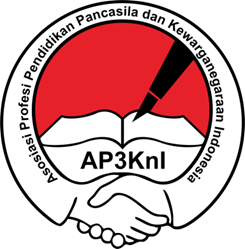Social Capital in the Capital Region of the Archipelago (Case Study of Telemow Village, Sepaku District, North Penajam Paser Regency, East Kalimantan)
DOI: https://doi.org/10.26618/jed.v7i4.8373
Social Capital, Social Adhesive, Community
Abstract
Most of the people of Telemow village are immigrants, but can live in harmony and peace. This study aims to determine the social capital that becomes the grip and glue of the community in Telemow village. The type of research used is qualitative research and is described descriptively. Determination of informants by means of purposive sampling and saturated sampling technique. In obtaining research data, the researcher used observation, interview, and documentation techniques. The collected data is then analyzed using interactive model analysis techniques, namely the data is reduced, then presented, and finally concluded or verified. The researcher uses data/source triangulation in examining the data. The results of the study are: 1) Forms of social capital, namely a) Mutual cooperation. Gotong royong activities are in accordance with needs and are not scheduled and the funding comes from non-governmental organizations in the form of environmental cleaning activities, repairing small-scale village infrastructure, and helping communities affected by disasters such as illness, accidents, and so on. In addition, there is also a scheduled mutual cooperation that is carried out simultaneously in all village areas every year and the funding is sourced from the Village Fund called Bulan Bakti. b) Formal and informal forums. Formal forums include Gapoktan, Pokdakan, PKK, KB Village, and Dasawisma. Meanwhile, informal forums take the form of patrols, sports, and Gerakan Sedekah Harian. 2) Factors that influence social capital are trust, norms, and social networks. The social capital that is built in the Telemow village community becomes the glue that is able to arouse a sense of concern, tolerance, togetherness, trust, and brotherhood among the community so as to create harmony, unity, and oneness. The more often people meet, gather, and share stories, the potential to reduce conflict.References
Abdullah, S. (2013). Potensi dan kekuatan modal sosial dalam suatu komunitas. SOCIUS: Jurnal Sosiologi, 12(1).
Ancok, J. (2003). Modal Sosial dan Kualitas Masyarakat. Universitas Gadjah Mada.
Ariessi, N. E., & Utama, M. S. (2017). Pengaruh modal, tenaga kerja dan modal sosial terhadap produktivitas petani di Kecamatan Sukawati Kabupaten Gianyar. Piramida, 8(2), 97–107.
Bakri, S., Qurniati, R., Safe’i, R., & Hilmanto, R. (2021). Kinerja Modal Sosial Dalam Kaitannya Dengan Pendapatan Masyarakat Agroforestry: Studi Di Desa Karang Rejo Kecamatan Jati Agung Lampung Selatan. Jurnal Hutan Tropis, 9(1), 191.
Cahyono, B., & Adhiatma, A. (2022). Peran Modal Sosial Dalam Peningkatan Kesejahteraan Masyarakat Petani Tembakau Di Kabupaten Wonosobo. Conference In Business, Accounting, And Management (CBAM), 1(1).
Faedlulloh, D. (2017). Modal Sosial dan Praktik Gotong Royong Para Pengrajin Gula Kelapa di Desa Ketanda Kabupaten Banyumas. Publisia: Jurnal Ilmu Administrasi Publik, 2(2), 89–101.
Fathy, R. (2019). Modal Sosial: Konsep, Inklusivitas dan Pemberdayaan Masyarakat. Jurnal Pemikiran Sosiologi, 6(1), 1–17.
Febriani, L., & Saputra, P. P. (2018). Modal Sosial Dalam Pengembangan Madu Kelulut Sebagai Komoditas Ekonomi Dan Pariwisata Di Kecamatan Lubuk Kabupaten Bangka Tengah. Society, 6(2), 83–91.
Field, J. (2018). Modal Sosial (Terjemahan Nurhadi (ed.)). Kreasi Wacana.
Fukuyama, F. (2002). Trust: Kebijakan Sosial dan Penciptaan Kemakmuran (T. Rusiani (ed.)). Qalam.
Harahap, M., & Herman, S. (2018). Hubungan Modal Sosial Dengan Produktivitas Petani Sayur (Studi Kasus Pada Kelompok Tani Barokah Kelurahan Tanah Enam Ratus Kecamatan Medan Marelan. AGRIUM: Jurnal Ilmu Pertanian, 21(2), 157–165.
Jim Ife, frank T. (2008). Community Development: Alternatif Pengembangan Masyarakat di Era Globalisasi. Pustaka Pelajar.
Kawulur, S. K., L. S., B. O., & Loho, A. E. (2017). Modal Sosial Kelompok Tani “Citawaya” Di Desa Talikuran I, Kecamatan Sonder, Kabupaten Minahasa. Agri-Sosioekonomi, 13(3), 31.
Moleong, L. J. (2012). Metodelogi Penelitian Kualitatif. Remaja Rusdakarya.
Mudiarta, K. G. (2009). Jaringan Sosial (Networks) dalam Pengembangan Sistem dan Usaha Agribisnis: Perspektif Teori dan Dinamika Studi Kapital Sosial. In Kementerian Pertanian.
Nurcahyono, O. H., & Astutik, D. (2018). Harmonisasi Masyarakat Adat Suku Tengger (Analisis Keberadaan Modal Sosial pada Proses Harmonisasi pada Masyarakat Adat Suku Tengger, Desa Tosari, Pasuruan, Jawa Timur). Diailektika Masyarakat: Jurnal Sosiolog, 2(1), 1–12.
Putnam, R. (2000). Bowling Alone: The Collapse and Revival of American Community. Simon and Schurster.
Rochmadi, N. (2012). Menjadikan nilai budaya gotong-royong sebagai common identity dalam kehidupan bertetangga negara-negara ASEAN. Universitas Negeri Malang.
Santoso, T. (2020). Memahami Modal Sosial. Pustaka Saga.
Sugiyono. (2016). Metode Penelitian Kuantitatif, Kualitatif dan R&D. Alfabeta.
Usman, S. (2018). Modal Sosial. Pustaka Pelajar.
Wiji, H. (2014). Jimpitan, Modal Sosial yang Menjadi Solusi Permasalahan Masyarakat. JKAP (Jurnal Kebijakan Dan Administrasi Publik), 18(2), 131–146.



